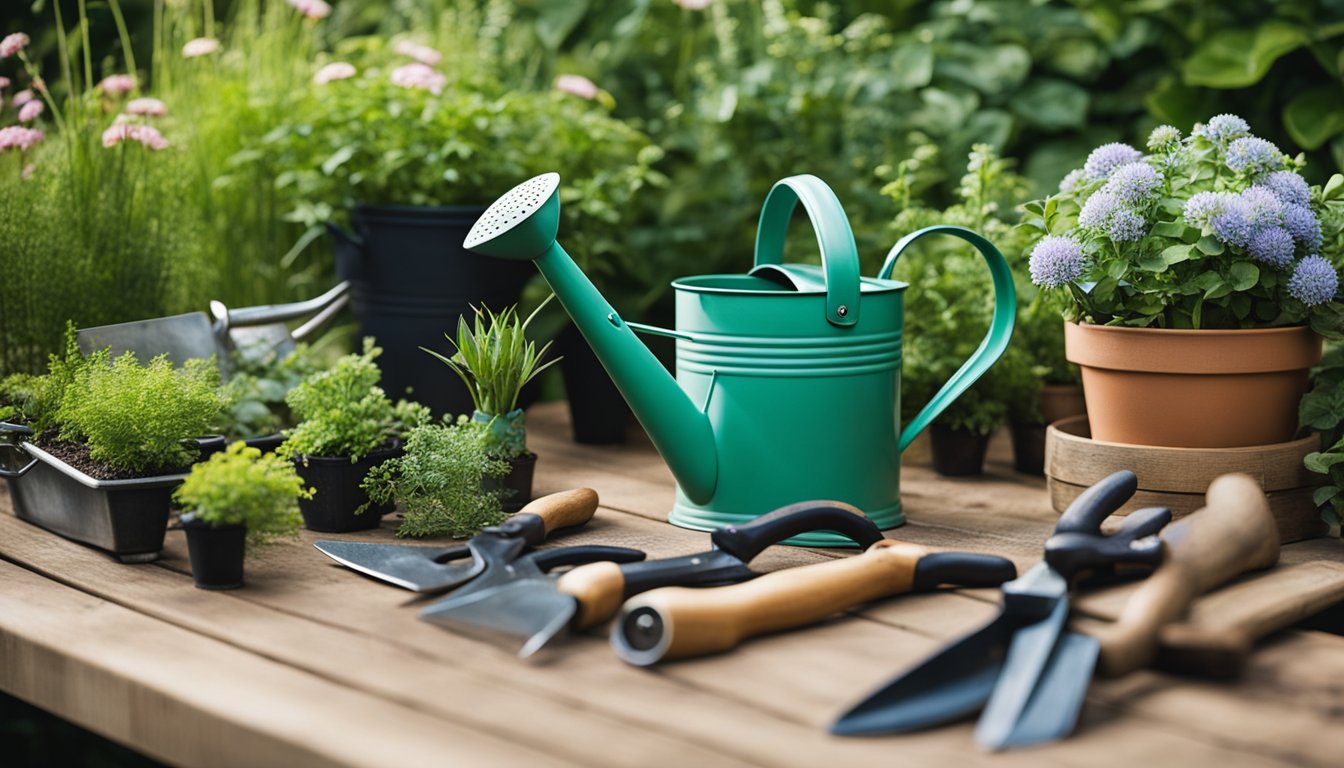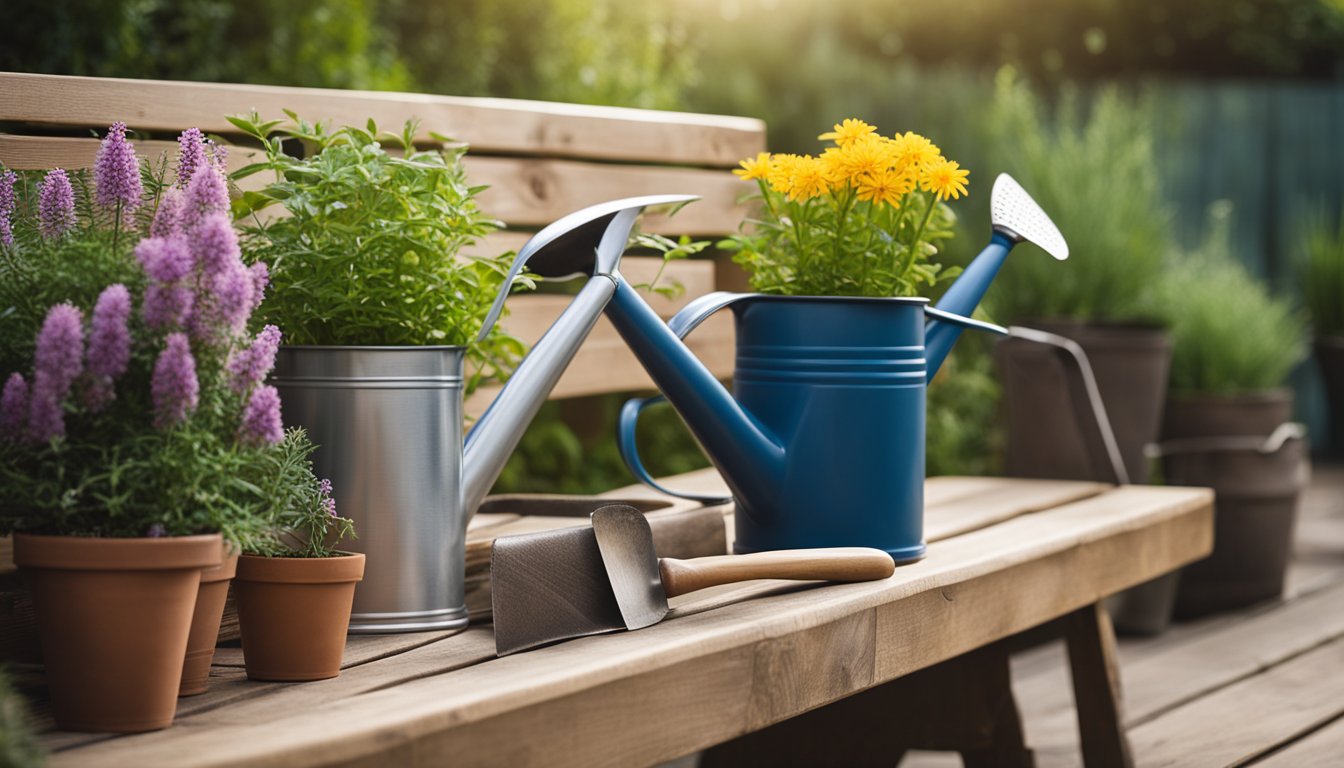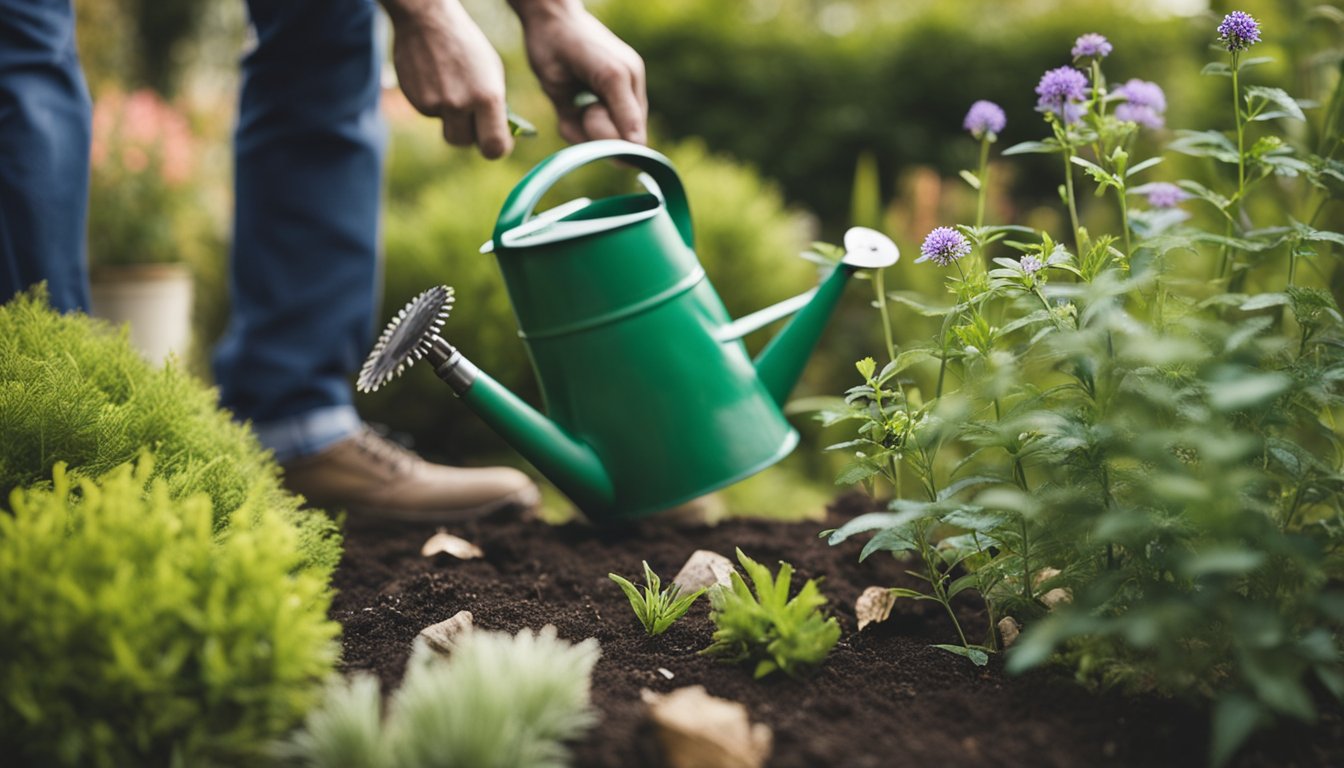Late updated: 05 Oct 2024 11:10
Written by: Emily Thornton
Best Tools For Maintaining A UK Native Plant Garden: Essential Equipment for Every Gardener
Gardening with native UK plants can be a rewarding experience. These plants are adapted to the local climate and require tools that cater to their maintenance. Efficient tools are indispensable in ensuring that your native plant garden remains vibrant and healthy. They help manage the unique needs of native trees, shrubs, and wildflowers, promoting growth and supporting biodiversity.

Selecting the right tools can make a significant difference in not only maintaining your garden but also enhancing its overall aesthetic. From pruners to spades, choosing quality equipment is crucial for nurturing native plants and ensuring they thrive. As stewards of the environment, our approach involves sustainable practices and using tools that align with these goals.
Key Takeaways
- Quality tools are essential for maintaining UK native plant gardens.
- Properly selected equipment supports the growth of native vegetation.
- Sustainable practices are central to successful garden management.
Preparing Your Garden

Preparing a UK native plant garden requires careful planning focused on understanding the local soil, picking the right plants for the conditions, and thoughtfully laying out the garden. Proper preparation ensures both aesthetic and ecological benefits, promoting successful growth and aiding ongoing maintenance.
Understanding UK Soil Types
In the UK, our gardens can contain a variety of soil types, from chalky and clay to sandy and loamy. Each type provides different drainage and nutrient levels, impacting plant growth. Chalky soil, for instance, often requires the addition of organic matter to improve water retention, while clay soil may need sand to enhance drainage.
Testing your soil’s pH and structure helps us determine which plants are most suitable. A simple test kit allows us to identify whether our soil tends towards acid or alkaline. This informs our plant selection, as certain native species thrive better in specific soil conditions. Working with the existing soil, rather than drastically altering it, usually produces the most sustainable results.
Selecting Native Plants
In choosing plants native to the UK, we not only enhance local biodiversity but also increase our garden’s resilience. Native hedges like hazel, elder, hawthorn, and blackthorn thrive in various soil conditions, providing structural depth and habitats for wildlife. Wildflowers are another excellent choice, thriving in meadows or dedicated beds and offering vibrant seasonal displays.
Consider the mature size of plants. Bushes such as hawthorn and dogwood offer attractive blooms and support local fauna like birds and insects. When selecting, focus on seasonal interests and plant associations to ensure year-round beauty and coverage. This thoughtfulness in selection creates a balanced, rich tapestry of greenery.
Garden Layout and Planting
Our garden’s layout plays as crucial a role as plant selection. Grouping plants with similar water and light requirements helps streamline maintenance efforts. Strategic spacing of plants is vital, ensuring each species has the room to reach its full potential without stifling its neighbours. Incorporating native hedgerows like holly or hornbeam at boundaries adds privacy and ecological benefits.
Utilising mulches, such as shredded leaves or pine straw, assists in conserving soil moisture and suppressing weeds. This technique is integral for establishing a robust garden foundation. Being meticulous with our planning and planting ensures that our garden thrives in its native context, contributing to the health and beauty of our environment.
Supporting Biodiversity and Wildlife
Supporting biodiversity and wildlife involves strategic planting and careful garden maintenance. It's essential to choose native plant species that cater to local wildlife, encouraging pollination and providing habitats. By managing the garden thoughtfully, we can help sustain local ecosystems and contribute to conservation efforts.
Attracting Pollinators and Beneficial Insects
Pollinators, such as bees and butterflies, are crucial for maintaining our garden's biodiversity. By planting native flowering plants, we create a rich nectar source that attracts these important insects. Wildflowers, lavender, and foxgloves are excellent choices for our agendas, given their popularity with pollinators. It's crucial to provide a varied bloom period so that pollinating insects have access to nectar throughout the growing season.
Additionally, we should integrate plants that invite beneficial insects like ladybirds and lacewings. These insects help control pest populations, fostering a balanced ecosystem within our garden. Using companion planting techniques can enhance these benefits, making our garden a haven for both pollinators and beneficial insects.
Providing Habitats for Birds and Wildlife
Native trees and shrubs play a significant role in creating shelter for local wildlife. Many UK native trees, such as oak and crab apple, support diverse fauna, from birds to small mammals. It's vital to incorporate a variety of plant types to cater to different species' needs, promoting biodiversity in our garden.
Birds benefit from trees that produce berries and seeds, such as rowan and hawthorn, providing food resources year-round. Installing bird boxes and feeders can also encourage birds to visit and dwell in our garden. By thoughtfully arranging our plantings and structures, we create a welcoming environment for a host of wildlife.
Garden Maintenance for Ecosystem Health
Regular garden maintenance is key to sustaining a healthy ecosystem. We must focus on removing invasive species to ensure native plants thrive. This not only supports local biodiversity but also deters pests that can endanger plant health. Consistent weeding and pruning help prevent disease and promote vigorous growth of native species.
Watering practices should reflect local climate conditions, conserving water and reducing stress on plants. It's important to retain some natural debris, such as fallen leaves and branches, as they provide additional habitats for insects and small creatures. By maintaining our garden with an eye on conservation, we contribute positively to local ecosystems.
Frequently Asked Questions

When managing a UK native plant garden, selecting the right tools and ensuring their upkeep can significantly impact the garden's success. Below, we address some common queries related to this topic.
What are the essential garden hand tools for tending to UK native plants?
For effective care of native plants, we recommend tools like hand trowels, pruners, and soil knives. These are crucial for tasks such as planting and trimming. Choose high-quality items to ensure longevity and efficient gardening.
Which garden cleaning implements are most effective for maintaining a UK native plant garden?
To maintain a tidy garden environment, a sturdy rake, broom, and leaf blower are important. They help in managing fallen leaves and debris. Ensuring these tools are robust will aid in keeping the garden neat and healthy.
What is the recommended way to clean and maintain garden tools in the UK?
Regular cleaning of garden tools involves rinsing them with water and drying them thoroughly. Applying a light coat of oil prevents rust. It’s also useful to sharpen cutting edges routinely to maintain their efficiency.
Could you list the top garden tools that should feature in a UK plant enthusiast's collection?
Key tools for UK plant enthusiasts include a garden hoe, digging fork, and wheelbarrow. These tools facilitate efficient soil preparation and plant transportation. Investing in durable versions of these tools can enhance your gardening experience.
What are the best heavy-duty gardening tools suitable for UK native plant gardening?
For tackling more demanding garden tasks, we suggest heavy-duty spades and mattocks. These tools are adept at digging and breaking up compact soil efficiently. Opt for ergonomic designs to reduce physical strain while working.
How can one incorporate eco-friendly tools in the maintenance of a UK native plant garden?
Using sustainable materials for garden tools, such as bamboo and recycled metal, can minimise environmental impact. Additionally, manual tools like hand weeders reduce dependency on electricity, aligning with eco-conscious gardening practices.
